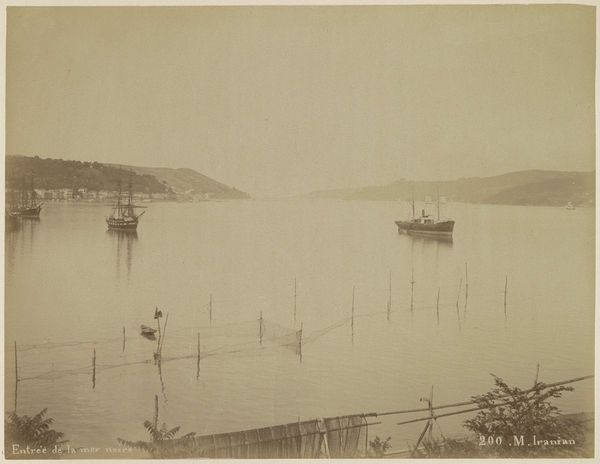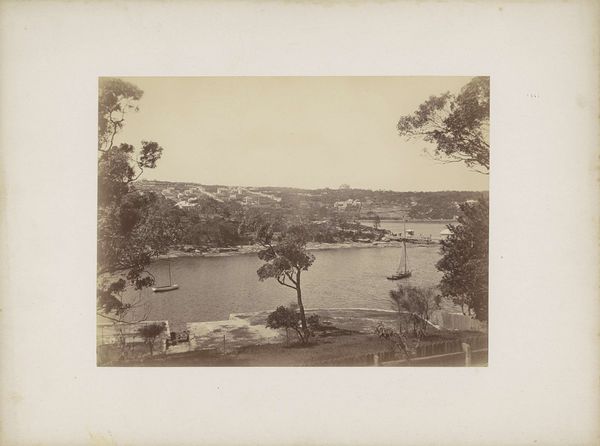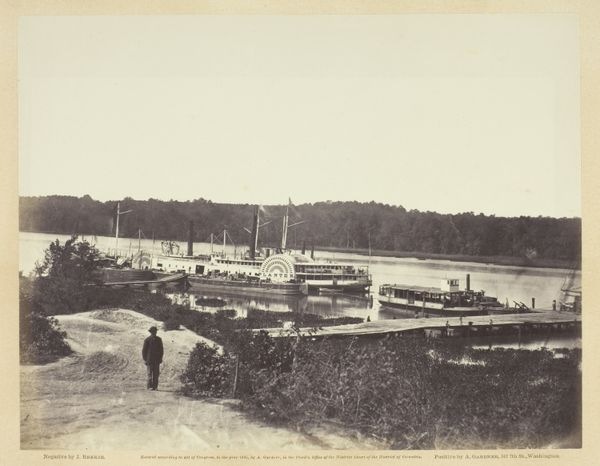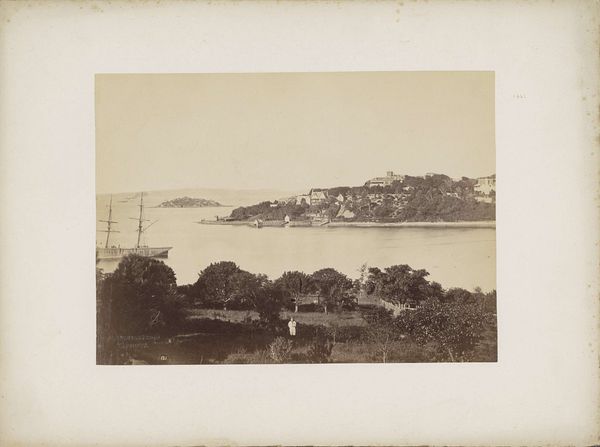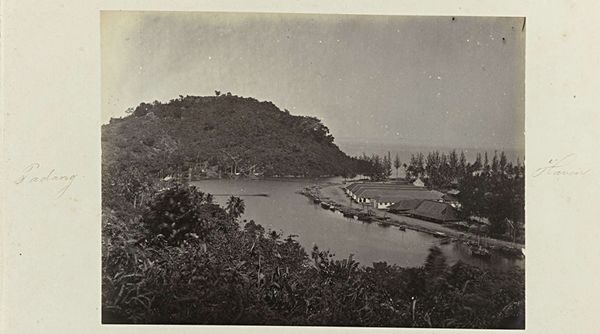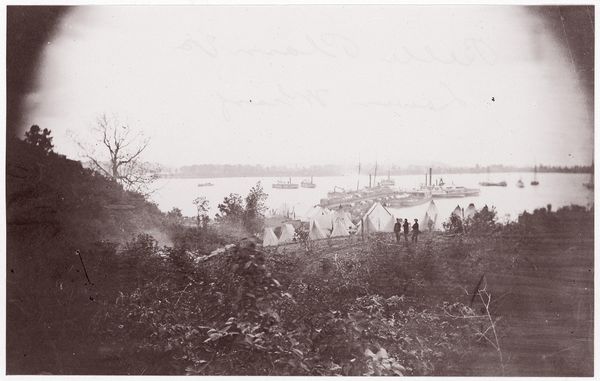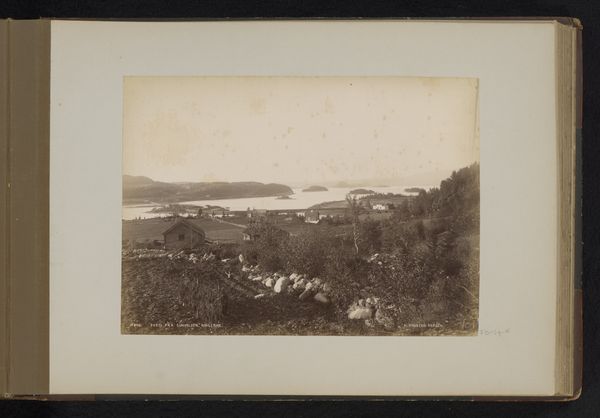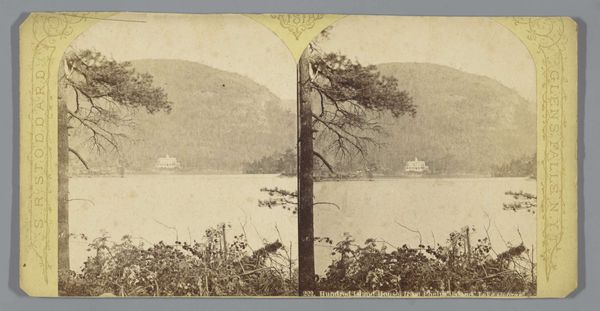
photography
#
ship
#
landscape
#
photography
#
cityscape
#
watercolor
Dimensions: height 241 mm, width 329 mm
Copyright: Rijks Museum: Open Domain
Editor: Here we have "Gezicht op de ingang van de nieuwe haven te Singapore," a photograph taken by G.R. Lambert & Co. sometime between 1870 and 1910. It depicts the entrance to the harbor in Singapore. The sepia tone and soft focus give it a somewhat dreamy quality, yet there's also a starkness in the subject matter. How do you read this piece? Curator: Well, beyond the immediate aesthetic impression, it’s crucial to consider the socio-political context. Photography from this period, particularly images of colonized lands, often served as tools of imperial documentation. This isn't simply a picturesque landscape; it's a carefully constructed view of Singapore’s port, an entrepôt that played a crucial role in global trade and colonial power dynamics. Editor: So you're saying it's not just a pretty picture, but a statement about power? Curator: Precisely. Think about who controlled the means of representation – G.R. Lambert & Co., a European firm – and what message they might have wanted to convey about Singapore as a thriving, “civilized” port under colonial rule. This photograph contributes to the visual archive that legitimized and perpetuated imperial power structures. How do you think the depiction of local inhabitants, or rather their absence, contributes to this narrative? Editor: I see what you mean. The focus is solely on the infrastructure and the ships; the people who lived and worked there are erased, reinforcing a narrative of European dominance. This photo presents a specific, constructed reality rather than the whole picture. Curator: Exactly. And consider the impact on Singaporeans. How would seeing themselves erased from their own landscape affect their sense of identity and agency? Examining these images through a postcolonial lens reveals their complicity in larger systems of power and oppression. Editor: It’s made me think a lot about how seemingly objective images can be so loaded with perspective and purpose. Curator: That’s precisely why engaging with the historical and social contexts is so crucial. It transforms how we understand these images, moving beyond aesthetics to a critical analysis of their role in shaping our understanding of the world.
Comments
No comments
Be the first to comment and join the conversation on the ultimate creative platform.

